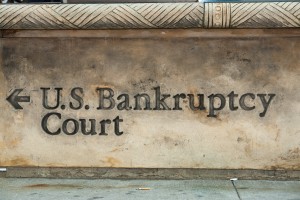By Ryan C. Wood
It is that time of year again. It is time to get your income documents together and figure out how much you owe to the government or how much of a refund you will receive. If you receive a tax refund each year from the Internal Revenue Service or the Franchise Tax Board it can be protected when filing for bankruptcy whether your file a Chapter 7 or Chapter 13 bankruptcy case.
When filing for bankruptcy protection the bankruptcy estate includes all legal or equitable interests in property. See Section 541(a)(1) of the Bankruptcy Code. Just because you have not received the tax refund yet does not mean it is not an asset of yours that should be listed in your bankruptcy petition in the schedule of assets, Schedule B. Whether you can protect the refund depends upon your other assets and the exemptions available to protect your assets. Exemptions protect your assets by exemption or removing your assets from the bankruptcy estate so that you can keep your assets to live life and continue to go to work and live. For example, California has a generous wild card exemption worth $26,925.00. This exemption can be applied to any combination of assets like bank account balances, tax refunds, high value household goods, vehicles or any other asset. Most state’s exemptions provide a limited amount for vehicles. If you have more than one paid in full vehicle in California you will most likely have to use some of the wild card exemption to protect both vehicles and remove them from the bankruptcy estate. So let us look at some numbers. If you have $12,000 in your bank accounts, a second vehicle that is paid in full and worth $7,500, a television worth $2,000 (just bought it on Black Friday), and an anticipated tax refund from the IRS and FTB of $5,300 you will max out the wild card exemption mentioned above. All of the assets just listed above will be exempted/protected/removed from the bankruptcy estate and you should keep all of it while still filing for bankruptcy protection. Different states have different limits to protect assets. So your state may not have as generous of exemptions. The bottom line is for your tax refund to be protected/exempted it should be listed in Schedule B and exempted by an applicable bankruptcy exemption so that you can keep the tax refund when you receive it.
In re Brittany Le’von Miller; Tax Refunds and Abandonment of Estate Property
Tax refund issues were just highlighted in a recent unpublished United States Bankruptcy Appellate Panel of the Ninth Circuit case, Case No. AZ-13-1307-JuKiD, In re Brittany Le’von Miller. For starters the debtor in this case filed her bankruptcy petition in August 2012, on October 25, 2012 the Chapter 7 trustee filed the notice of no distribution, debtor received her discharge and the case was closed and on May 9, 2013, over six months after filing the notice of no distribution, the Chapter 7 Trustee received the debtor’s tax refund totaling $3,259.00 directly from the Internal Revenue Service.
In this case the debtor in her originally filed schedules listed her expected tax refund in Schedule B with a value of “unknown.” The Chapter 7 trustee subsequently filed their notice of no distribution and the Chapter 7 case was discharged and closed. The notice of no distribution provides some case details and it says there are no assets to distribute for the benefit of creditors in the case. After the deadline for creditors to object to the discharge of the debtor’s debts has run out the bankruptcy court will sign the order of discharge and the Chapter 7 case is closed. When the case is closed Section 554(c) says all property is abandoned to the debtor. This is what happened in this case, but then the Chapter 7 trustee received the debtor’s 2012 totaling $3,259.00 refund directly from the Internal Revenue Service. Before going further, there is a question that is unanswered and unexplained. Why did the Internal Revenue Service send the debtor’s 2012 tax refund to the Chapter 7 trustee at all?
After the Chapter 7 Trustee received the 2012 tax refund the trustee immediately tried to reopen the Chapter 7 case and revoke/withdraw the notice of no distribution of assets. The debtors bankruptcy attorney argued the tax refund was abandoned upon the closing of the bankruptcy case. The trustee argued that Section 544(d) applied or inadvertent mistake as to filing the notice of no distribution. Apparently the bankruptcy court granted the Chapter 7 trustee’s motion and the debtor appealed. For an asset to be abandoned under Section 554(c) four requirements must be met: (1) the tax refund must have been properly scheduled; and (2) not administered by the trustee; (3) debtor’s case must close; and (4) abandonment is to the debtor. See DeVore v. Marshack (In re DeVore), 223 B.R. 193, 197 (9th Cir. BAP 1998). The court also recognized in Devore that the court has discretion to modify or revoke and technical abandonment under Section 554(c).
In the this particular case the Ninth Circuit Bankruptcy Appellate Panel held that the bankruptcy court needed to make findings of fact and law that could be reviewed and not just make a ruling with no explanation as to how it was arrived at. That did not happen, so this issue was remanded back to the original bankruptcy court for further findings. Time will tell what the outcome will ultimately be.
What Could The Debtor Have Done Differently?
The debtor arguably could have listed an estimated value of the tax refund. Would this have prevented the resulting problems from arising? Who knows, but at least the Chapter 7 trustee would have had a number to work with and evaluate the if creditors could be benefited. The debtor’s filed Schedule C clearly provided only 60% of her expected 2012 tax refund could be protected.
What Could The Chapter 7 Trustee Have Done Differently?
The Chapter 7 Trustee could have continued the 341 meeting of the creditors for the debtor to amend the Schedule B and actually list a value of the expected 2012 tax refund. It is unclear whether the Chapter 7 trustee questioned the debtor at the 341 meeting of the creditors as to potential value of the expected 2012 tax refund. Also, the Chapter 7 trustee could have not filed the notice of no distribution and held the case open until the amount of the 2012 tax refund was known and certain.
Possible Benefit to Creditors of the Bankruptcy Estate?
For some additional perspective, the amount of the 2012 tax refund that is not protected and available to administer by the Chapter 7 trustee is a total of $1,303.60 (40% of the 2012 refund totaling $3,259.00), of which the Chapter 7 trustee is entitled to $325.90 (25% of the $1,303.60, of the unprotected assets to be distributed for the benefit of the debtor’s creditors). So without deducting additional administrative costs, like postage for example, the debtor’s creditors in this Chapter 7 case could potentially share a pro-rata distribution of around $977.70. That is if the bankruptcy court allows the case to be reopened and the revoking of the Chapter 7 trustee’s notice of no distribution. Time will tell.




